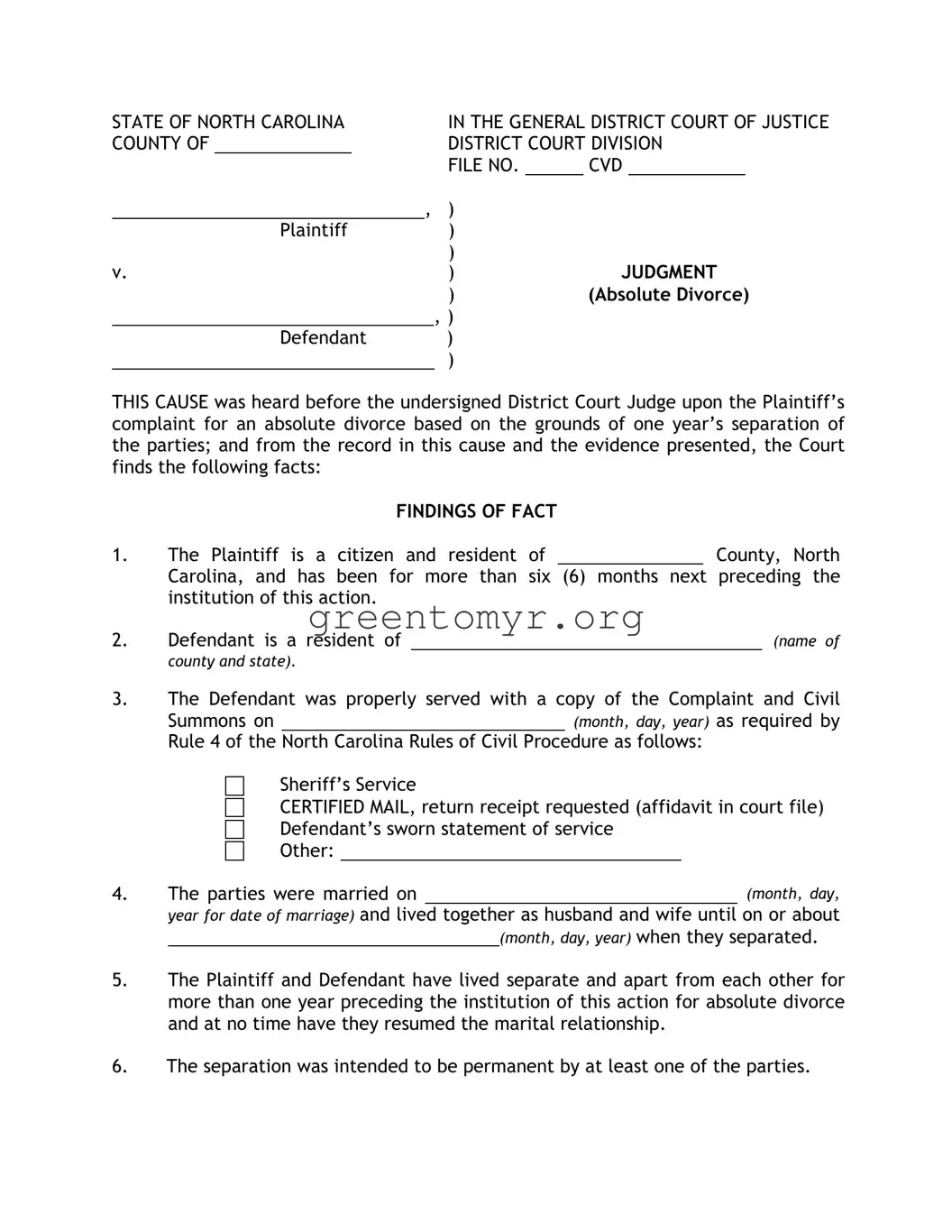Filling out the Judgment Absolute Divorce form in North Carolina is an important step in the divorce process, but many people make common mistakes that can affect the outcome. Here are ten mistakes to avoid as you fill out this crucial document.
One common error is failing to provide complete information about both parties. Every section, especially those regarding the names, addresses, and county of residence, must be accurate and thorough. Incomplete details can delay your case.
Another frequent oversight is neglecting to include the exact date of separation. It’s essential to specify when you and your spouse officially separated, as this can impact the court's decision. Make sure to double-check this detail.
Many individuals also forget to check the box indicating whether children were born of the marriage. If there are children involved, listing their names and birthdates is critical. Mistakes in this section can lead to complications in custody or child support discussions.
It is also vital that individuals ensure they have met the residency requirements. The plaintiff must be a resident of North Carolina for at least six months before filing. Failing to demonstrate this residency can cause the court to dismiss your case.
Providing incorrect service information about how the defendant was notified of the divorce is another pitfall. Ensure that you follow the correct procedures outlined in the North Carolina Rules of Civil Procedure. Documentation of proper service is key to the court’s acceptance of your filing.
Some people make the mistake of not detailing the intent behind the separation. A statement confirming that the separation was meant to be permanent must be included. Without this assertion, the court may question the nature of your separation.
Additionally, individuals often forget to sign and date the form. An unsigned document is not valid in court, which can lead to unnecessary delays. Always double-check for your signature before submitting.
Administrative errors can also occur, like not using the correct format for names, dates, or addresses. These small mistakes might seem insignificant, but they can create misunderstandings in legal proceedings.
Moreover, a lack of clarity in the request to return to a maiden name can cause issues. Be specific and clear about the name you wish to use, ensuring it aligns with what you previously used.
Lastly, forgetting to include a Certificate of Service can make your submission incomplete. This document must clearly state that the defendant has received notice of the divorce action. Ensure this is attached and filled out properly to avoid any complications.
By being mindful of these common mistakes, you can simplify your divorce process and help ensure your submission meets all necessary requirements. Taking the time to review your form thoroughly can save you significant stress down the line.



